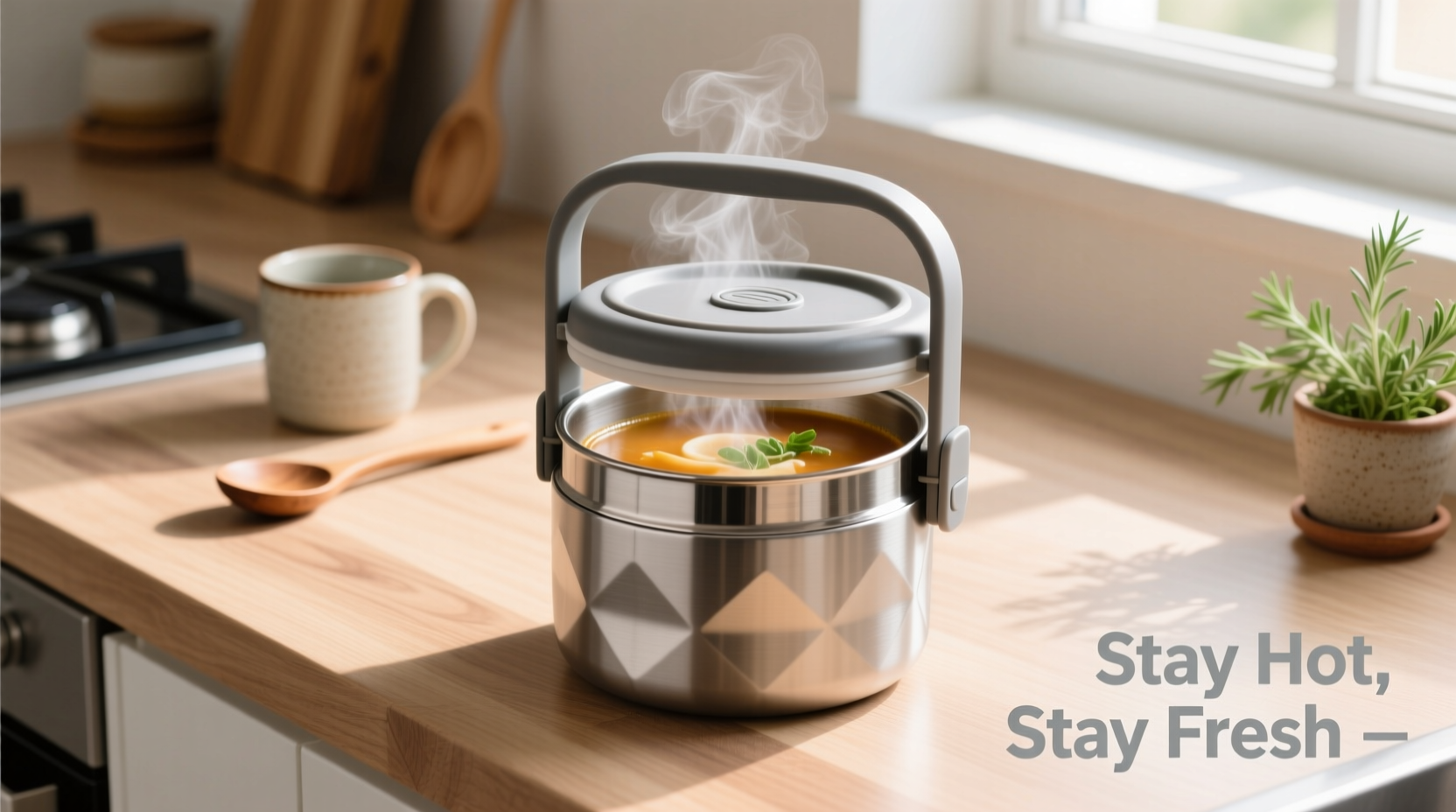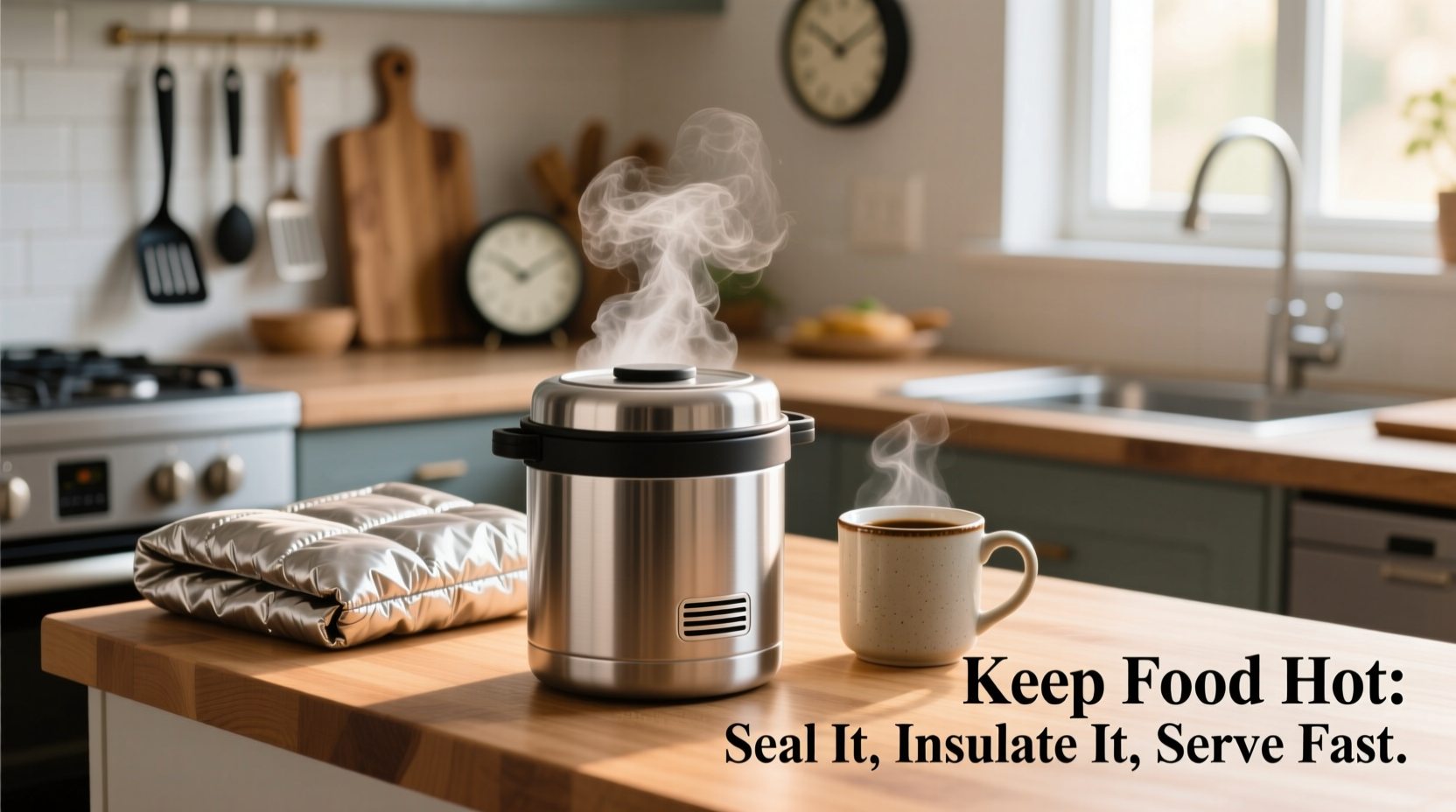The most effective ways to keep food hot include using insulated containers (maintains heat for 4-6 hours), chafing dishes with fuel canisters (keeps food at safe 140°F+ for events), slow cookers on 'warm' setting (ideal for home use), and properly wrapping food in aluminum foil with towels (DIY transport solution). Always maintain food temperatures above 140°F (60°C) to stay out of the food safety danger zone.
Nothing ruins a meal faster than cold food—whether you're transporting dishes to a potluck, hosting a dinner party, or simply trying to keep dinner warm while waiting for late guests. As someone who's tested dozens of heat retention methods in professional kitchens and home settings, I've discovered that the right approach depends entirely on your specific situation, timing needs, and equipment available. This guide delivers field-tested techniques that actually work, backed by food science principles and professional culinary experience.
Why Food Temperature Matters: Beyond Just Comfort
Keeping food hot isn't just about enjoyment—it's a critical food safety issue. According to the FDA Food Code, potentially hazardous foods must be maintained at 135°F (57°C) or above to prevent bacterial growth. The temperature danger zone spans from 40°F to 140°F, where pathogens multiply rapidly. Professional kitchens adhere to this standard strictly, and home cooks should too, especially when serving vulnerable populations.
| Method | Effective Duration | Minimum Temperature Maintained | Best For |
|---|---|---|---|
| Professional Insulated Container | 4-6 hours | 140°F+ | Transporting to events |
| Chafing Dish with Fuel | 2-4 hours | 145°F+ | Buffet service |
| Slow Cooker on Warm | 1-3 hours | 140°F | Home meal prep |
| Foil + Towel Wrap | 30-90 minutes | 120-135°F | Short-distance transport |
Home Kitchen Heat Retention Techniques
When you're cooking at home but need to keep food hot until serving time, these proven methods deliver consistent results without professional equipment.
Oven Warming Method
Set your oven to its lowest setting (usually 170-200°F) and place food inside in oven-safe containers. Crucially, cover the food with aluminum foil to prevent drying out. This technique works well for casseroles, roasted meats, and baked dishes. Never leave food in a warming oven for more than 2 hours to maintain quality and safety.
Stovetop Simmering for Liquids
Soups, stews, and sauces can be kept hot by maintaining them at a bare simmer on the stovetop. Use the lowest possible heat setting and keep the lid on when not serving. Stir occasionally to prevent scorching on the bottom. This method requires constant monitoring but keeps liquids at perfect serving temperature indefinitely.
Transporting Hot Food Successfully
Getting food from your kitchen to another location while maintaining safe temperatures presents unique challenges. The key is minimizing heat loss during transfer and maximizing insulation during transit.
Proper Container Packing Technique
Fill insulated containers completely to reduce air space (air cools faster than food). Preheat containers by filling with boiling water for 5 minutes before adding food. According to research from the USDA Agricultural Research Service, this simple step improves heat retention by up to 30%. Always use tight-sealing containers and wrap the entire package in towels or blankets for additional insulation.
Avoid These Common Transport Mistakes
- Leaving containers in cold cars (trunk temperatures can drop 20°F below ambient)
- Opening containers frequently during transport
- Using containers that aren't specifically designed for hot food
- Placing hot food directly on cold surfaces upon arrival

Event Serving Solutions That Actually Work
When serving multiple guests, maintaining food temperature becomes more complex. These professional techniques scale well for gatherings of any size.
Chafing Dish Setup Guide
Chafing dishes (common at buffets) use water between the food pan and heat source to provide gentle, even warming. Fill the water pan one-third full with hot water, not boiling, to prevent rapid evaporation. Use high-quality fuel canisters (sterno) and position them directly under the water reservoir. Check water levels every 90 minutes and replace fuel as needed. This method keeps food safely above 140°F for 2-4 hours.
The Towel Trick for Budget Buffets
Without chafing equipment, create a makeshift warming station by placing serving dishes on a towel-covered surface with hot water bottles or sealed containers of hot water underneath. Cover food with domes or inverted bowls to trap heat. This approach works surprisingly well for short-duration events when monitored closely.
Professional Techniques Worth Trying at Home
Restaurant kitchens employ specialized methods that home cooks can adapt with minimal equipment.
Bain-Marie (Water Bath) Method
Place your food container in a larger pan filled with hot water. The water transfers heat gently and evenly without drying out food. This technique works exceptionally well for delicate items like sauces, custards, and cheese dishes. Maintain the water temperature between 140-160°F for optimal results.
Temperature Monitoring Is Non-Negotiable
Invest in an instant-read thermometer to verify food temperatures periodically. The USDA Food Safety and Inspection Service emphasizes that visual cues alone can't confirm safe temperatures. Check multiple spots in each dish, especially the center where heat dissipates fastest.
When Heat Retention Fails: Troubleshooting Guide
Even with proper techniques, food sometimes cools too quickly. Here's how to diagnose and fix common problems:
- Problem: Food cools within 30 minutes despite using an insulated container
Solution: Container wasn't preheated or is improperly sealed. Replace with a higher-quality container and always preheat. - Problem: Edges of food are hot but center is cold
Solution: Stir food periodically to redistribute heat, or use shallower containers for more even temperature distribution. - Problem: Food dries out while keeping hot
Solution: Add moisture barrier with foil or lid, or place a damp (not wet) towel over the food before covering.
Methods That Don't Work (Despite Popular Belief)
Many commonly suggested techniques actually compromise food safety or quality:
- Wrapping in just newspaper: Provides minimal insulation and risks chemical transfer
- Using heating pads: Creates uneven heating and potential fire hazard
- Keeping oven door slightly open: Causes massive heat loss and temperature fluctuations
- Placing hot food directly in coolers: Coolers are designed for cold retention, not heat
Frequently Asked Questions
How long can food safely stay hot without temperature control?
Food should not remain in the temperature danger zone (40°F-140°F) for more than 2 hours. In environments above 90°F, this drops to 1 hour. Always use proper heat retention methods for longer periods.
Can I reheat food that's cooled below safe temperature?
No. Once food enters the danger zone for more than the recommended time, harmful bacteria may have multiplied to dangerous levels that reheating cannot eliminate. When in doubt, throw it out.
What's the best way to keep pizza hot during delivery?
Professional pizza delivery uses insulated bags specifically designed for this purpose. At home, place the pizza box inside a larger insulated container with a hot water bottle or heat pack placed beside (not on top of) the box to maintain temperature without making the crust soggy.
Do thermal cookers really work for keeping food hot?
Yes, properly used thermal cookers (like high-quality vacuum insulated containers) can maintain safe food temperatures for 5-6 hours. The key is filling them completely with piping hot food (165°F+) and minimizing openings. Not all "thermal" containers perform equally—research specific models before relying on them for food safety.











 浙公网安备
33010002000092号
浙公网安备
33010002000092号 浙B2-20120091-4
浙B2-20120091-4